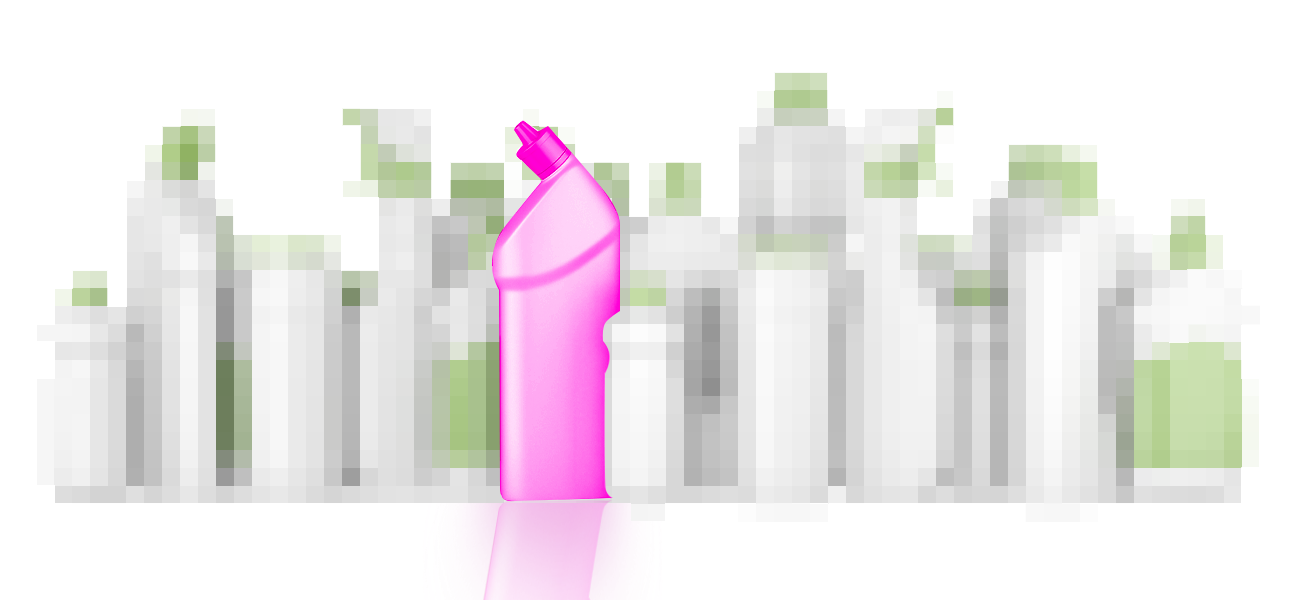Traditional packaging is rich with information. There are callouts, icons, brand-subrand-subsubbrand, images, mission statements, backstories, legal, ingredients, UPCs, gross unit weight, certifications, badges, social media icons, you get the picture.
Of course, this isn’t (usually) smashed onto one surface. We’re all quite familiar with finding the details on the back or sides of a package.
But consider pixels and screens. A 50 lb. bag of dog food with 12 sq. ft. of printable space in the grocery aisle is reduced to an inch or two on screen. Useful details in real-life packaging quickly become visual noise when reduced to a few hundred pixels. The rich information on traditional packaging obscures what the product is and who made it when it appears on digital packaging.
Ecommerce compensates for this. With links to additional information and other images, the space allowed to dive into product details has never been larger. Yet the product itself has never been displayed smaller.
Clear labels and descriptions of the product and brand are built into an ecommerce interface. Every product is displayed with identical font and format in their description. This is revolutionary for packaging. In this homogeny, retail packaging doubles as its own billboard.
Packaging destined for web retail can and should lean on the liquid, interactive space built into the platform. A consumer’s attention no longer needs to be drawn through various information on a static surface. It simply must be drawn to the thumbnail image. From there, consumers can dive as deep as they want. They can click through to a product page, zoom into images or scroll down for more information. Design hierarchy, while still important, is far simpler. The sole objective of the hero image is to entice a click.
This calls for a strategic shift in package design.
It is worth reconsidering the hierarchical importance of packaging elements. In the abstract, the things listed below might be reduced or eliminated altogether from a hero product package:
-
Product images. Regardless of whether or not it’s represented on the package, it’s essential to supply a supplementary image of the product on an ecommerce platform. The product can really shine when it’s the center of attention. Digitally, a consumer can zoom into the product image, which is more appealing and accurately represented when optimized for digital display. This avoids the inevitable degradation inherent in a photo of a product image that’s been printed on the package.
-
The product/brand story. It’s unlikely that an ecommerce consumer will zoom in to read long copy on a package. But the product story is excellent content to build a brand in the more details section, or on the product page.
-
Social icons and URLs. It’s a surprisingly big step for a consumer to search a social media platform for a brand or manually enter an URL into a browser. But icons and URLs are in their natural environment in ecommerce, where consumers can easily click links to product pages and icons to social platforms.
This is not a call for simplification alone, consider other packaging elements that could be reimagined, rearranged and repurposed to further improve the effectiveness of ecommerce display:
-
The hero image. What image garners the fastest recognition and generates the most enticing first impression?
-
Image hierarchy. Many platforms allow multiple product images. Additional images should serve strategic purposes. Details, close-up product images, products in action, etc. What is the second most important thing to display? Third most? Put the images in that order.
-
Image quality is paramount. Images should be optimized for digital display size and color profiles—especially zoomable images.
-
Additional product information. Many ecommerce platforms allow ample space for product details. Use it to entice and build rapport with consumers, reduce or eliminate it from the packaging.
-
Customer reviews. They are critically important and are always somewhere near the product details. Be proactive about customer reviews, ratings and perceptions.
With the competition identically displayed, product packaging is its own pedestal, its own frame, its own billboard. And much like a good billboard, our packaging must build on the existing brand, and also be enticing, disruptive. lightning fast, crystal-clear and incredibly precise.
We’re at the precipice of a definitive new generation of package design. One that is incredibly refreshing and an exciting exercise in the value of pure design.



